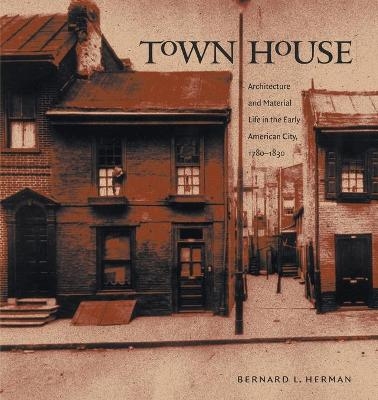
Town House
Architecture and Material Life in the Early American City, 1780-1830
Seiten
2017
The University of North Carolina Press (Verlag)
978-1-4696-3352-7 (ISBN)
The University of North Carolina Press (Verlag)
978-1-4696-3352-7 (ISBN)
In this abundantly illustrated volume, Bernard Herman provides a history of urban dwellings and the people who built and lived in them in early America. In the eighteenth century, cities were constant objects of idealization, often viewed as the outward manifestations of an organized, civil society. As the physical objects that composed the largest portion of urban settings, town houses contained and signified different aspects of city life, argues Herman.
Taking a material culture approach, Herman examines urban domestic buildings from Charleston, South Carolina, to Portsmouth, New Hampshire, as well as those in English cities and towns, to better understand why people built the houses they did and how their homes informed everyday city life. Working with buildings and documentary sources as diverse as court cases and recipes, Herman interprets town houses as lived experience. Chapters consider an array of domestic spaces, including the merchant family's house, the servant's quarter, and the widow's dower. Herman demonstrates that city houses served as sites of power as well as complex and often conflicted artifacts mapping the everyday negotiations of social identity and the display of sociability.
Taking a material culture approach, Herman examines urban domestic buildings from Charleston, South Carolina, to Portsmouth, New Hampshire, as well as those in English cities and towns, to better understand why people built the houses they did and how their homes informed everyday city life. Working with buildings and documentary sources as diverse as court cases and recipes, Herman interprets town houses as lived experience. Chapters consider an array of domestic spaces, including the merchant family's house, the servant's quarter, and the widow's dower. Herman demonstrates that city houses served as sites of power as well as complex and often conflicted artifacts mapping the everyday negotiations of social identity and the display of sociability.
Bernard L. Herman is Edward F. and Elizabeth Goodman Rosenberg Professor of Art History at the University of Delaware. He is author of three previous books, including Architecture and Rural Life in Central Delaware, 1700-1900; The Stolen House; and, with Gabrielle M. Lanier, Everyday Architecture of the Mid-Atlantic: Looking at Buildings and Landscapes.
| Erscheinungsdatum | 15.11.2016 |
|---|---|
| Reihe/Serie | Published by the Omohundro Institute of Early American History and Culture and the University of North Carolina Press |
| Verlagsort | Chapel Hill |
| Sprache | englisch |
| Maße | 216 x 229 mm |
| Gewicht | 525 g |
| Themenwelt | Geschichte ► Allgemeine Geschichte ► Neuzeit (bis 1918) |
| Geisteswissenschaften ► Geschichte ► Regional- / Ländergeschichte | |
| Geschichte ► Teilgebiete der Geschichte ► Kulturgeschichte | |
| Sozialwissenschaften ► Soziologie | |
| Technik ► Architektur | |
| ISBN-10 | 1-4696-3352-3 / 1469633523 |
| ISBN-13 | 978-1-4696-3352-7 / 9781469633527 |
| Zustand | Neuware |
| Haben Sie eine Frage zum Produkt? |
Mehr entdecken
aus dem Bereich
aus dem Bereich
Europa 1848/49 und der Kampf für eine neue Welt
Buch | Hardcover (2023)
DVA (Verlag)
48,00 €
Giordano Bruno - ein ketzerisches Leben
Buch | Hardcover (2024)
C.H.Beck (Verlag)
29,90 €


